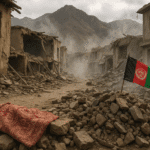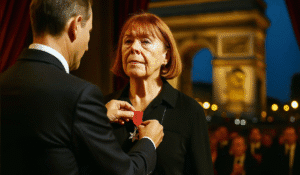The recent episode involving a Taliban minister and Indian female journalists offers more than a moment of diplomatic theater, it presents a revealing case study in image management, power projection, and the persistent struggle over women’s visibility in public discourse.
A calculated performance
In the first press conference held in New Delhi, no female journalists were observed, which sparked immediate backlash over gender exclusion. The Taliban’s line later was that it was a “technical issue” and not a deliberate omission. Within days, the minister held a second session in which women occupied front‑row seats. That sequence suggests a controlled reversal: the regime first tried to sideline women, then backpedaled under public pressure to present an image of responsiveness.
This is not purely symbolic. In international diplomacy, optics are potent. Showing female voices participating, even in a tightly managed format, helps the Taliban claim moderation and openness. It is an attempt to reframe global perception without altering structural constraints on women’s rights in Afghanistan.
The gap between visibility and empowerment
Yet, inclusion in a staged press event does not imply freedom or influence. Women in Taliban‑controlled Afghanistan remain banned from higher education and most public roles, and media outlets run by women face shutdowns. The state tightly polices what women may show, say, or even whether they may appear in public. The press event thus becomes a hollow gesture: an appearance of equality without the substance.
Moreover, power imbalance remains rigid. The minister controls who gets invited, what questions are asked, and under what conditions. Female presence is permitted only within those controlled boundaries. Such selective inclusion may help reduce international pressure, but it does not equate to genuine pluralism or gender equity.
Implications for diplomacy and legitimacy
For India and other states engaging with the Taliban, the incident underscores the complexity of dialogue. The Indian government denied involvement in arranging the first presser’s guest list, distancing itself from the exclusion. But hosting the Taliban’s foreign minister invites scrutiny. Accepting a staged media event with women involved can serve as de facto recognition of the regime’s diplomatic standing, even without formal acknowledgement.
States must therefore tread carefully: rejecting all engagement may isolate Afghanistan further, but uncritical acceptance of symbolic optics risks normalizing authoritarian control masked by superficial inclusion. Scrutiny of substance must accompany any diplomatic access.
A test for the media and civil society
The press corps itself faced a dilemma. Male journalists could have walked out in protest when women were excluded. Some voices have called for such solidarity. But retreating entirely from coverage might cede ground to narratives shaped solely by the regime. Instead, persistent questions, not just presence, may be the more effective strategy: probing the disconnect between public claims and internal policies.
Civil society and the international media must treat this moment not as a benign concession but as a barometer. The Taliban’s willingness to stage inclusion when under pressure indicates that sustained pressure matters. Yet it also signals how fragile and selective their concessions will remain.
A Final Note
The episode of the Taliban minister’s interaction with Indian female journalists is not just a headline. It signals how authoritarian regimes can use carefully curated optics to mask deep inequalities. Visibility without power becomes a tool of propaganda. The real test is whether such superficial performances give way to structural change, whether Afghan women can exercise freedom beyond smiling faces in front rows.














